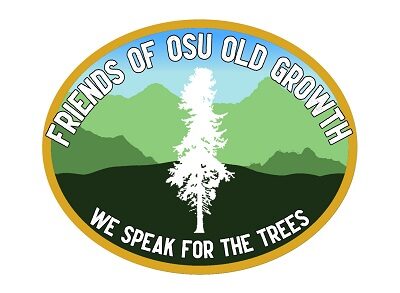In a recent visit with the Dean (of the College of Forestry), he contested my claim that we’d been given no prior notice of OSU’s recent harvest (of Old Growth near Baker Creek). He said something like, “You were on the distribution for the notification – I checked.” This sparked my curiosity and prompted me to go back to check my email account. Here’s what I found:
On May 6th, 2019 (at 6:57 p.m.), OSU’s College of Forestry spokesperson, Ryan Brown, sent out a message to the CoF distribution titled, ” Harvest Closure Near Baker Creek Starting 5/7/19 and Dead Trees to be Removed at Oak Creek on 5/8/2019″. Ryan’s email contained the following notice:

Note that the closure date for the harvest is May 7th – a full five hours and three minutes after the email was sent! So, yes, technically the College of Forestry did give prior notice (five hours before the area was closed to the public). The Dean would probably also point to the College of Forestry harvest schedule and map (available on the CoF website):
College of Forestry’s 2019 Harvest Schedule: https://cf.forestry.oregonstate.edu/sites/default/files/HarvestSchedule2019.pdf
College of Forestry’s 2019 McDonald Forest Harvest Map: https://cf.forestry.oregonstate.edu/sites/default/files/McDonaldHarvest2019.pdf
I only recently discovered these documents (listed under “Management Activities”) on the College of Forestry’s website. After decades of only begrudgingly sharing information with the public, the CoF’s decision to publish a yearly harvest schedule and map is a welcome change. If you check the harvest schedule, however, you will see the (approx.) timing for the “No Vacancy” (i.e. Baker Creek) harvest is listed as, “3rd Quarter” (whereas it actually occurred in the 2nd quarter of the year).
But getting back to the email notification, I’d like to point out a couple of key (missing) things. Besides the lack of (meaningful) prior notice, the entire email notification process is fraught with problems. First, there’s the sheer volume of communications. I counted 28 messages in my email in-tray from Ryan this year alone (covering everything from their “poop pick-up” to fire danger, herbicides, and various closures). Many of the emails contain a long list of previous notices, adding confusion to the message. Just sorting the substance from the “fluff” is a major task. Also, neither the closure notification nor the Harvest Schedule provide much meaningful information. The description, “Prescription: Clearcut with structure retention” is all that’s given. The average person has no clue what “structure retention” means. They are more interested in whether the harvest is going to close their favorite hiking/biking/running route and how long it’s going to be closed. They assume (based on prior harvests and community values) that , OSU would never cut Old Growth. They have no reason to believe OSU would cut centuries-old trees.
One of things the Dean and I discussed is the need for on-site notification (e.g. posting signs) for future harvests FAR in advance (6 months or more). I’m envisioning signs posted (every couple hundred meters) along harvest boundaries, and at all major access points saying, for example, “NOTICE: OSU’s College of Forestry is tentatively planning to harvest this section of forest on May 7th, 2019. We’d like your input – are there specific natural features or trees you’d like to see protected? For more information, go to the following link or call us at…“. This pre-emptive notification would allow for meaningful dialogue with neighbors and recreational users. Of course, it will only work if the College of Forestry embraces our input – and is willing to make substantive changes in response.
I also suggested the College of Forestry make major changes to how they describe future harvests. They need to greatly expand beyond, “clearcut with structure retention”, to provide information like:
- average age class of the trees they plan to cut
- special natural or cultural features that may be impacted
- stream/watershed impacts and protective buffers
- wildlife impacts and protections
The information needs to be conveyed in a way that the average (non-technical) person can understand. No more jargon, please! These changes represent a substantial change for the College of Forestry’s communication process. If they embrace the changes, I believe they will find the public is far more supportive of their forest management activities.
